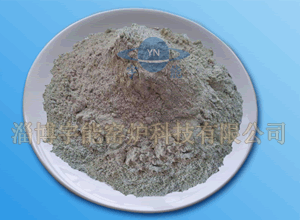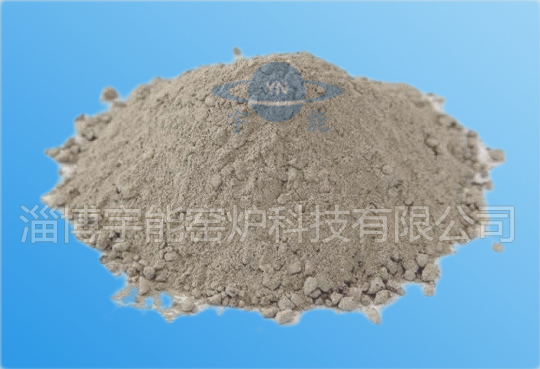Zibo Yunneng Kiln Technology Co. Ltd. Zibo Yunneng Kiln Technology Co. Ltd.
Free delivery samples
high quality assurance
Engineer's door-to-door guidance
lifelong technical support
Contact us+86159669653330086-533-5331887
Zibo Yunneng Kiln Technology Co. Ltd. Zibo Yunneng Kiln Technology Co. Ltd.
Free delivery samples
high quality assurance
Engineer's door-to-door guidance
lifelong technical support
Contact us+86159669653330086-533-5331887
Home -> News -> News -> Industry News ->
(I) principal component
The principal component in refractories refers to the chemical component that plays a decisive role in the high-temperature properties of materials.The reason why refractories have excellent resistance to high temperature, and many refractories have their own characteristics, completely or basically depends on the principal components.Therefore, the principal component of refractories must be given full attention.Generally, the classification of refractories according to their chemical composition, as well as the classification of many refractories of the same material into several grades, is or mostly according to the types of principal components and their content.The main components that can be used as refractories are all simple substances or compounds with high crystal lattice energy and high melting point or decomposition temperature.It is required that it can form a stable mineral with good properties in the production or service of refractories, and it has a higher reserve in nature and is easier to extract and use.In the earth's crust more distribution, can be used as the main component of refractories is oxide.In addition, some carbides, nitrides, silicides and borides can also be used as main components of refractories.
At present, the main components in the production and use of refractory materials are Al2O3, BeO, Cr203, MgO, CaO, SiO2, ThO2, TiO2, UO2, ZrO2 and other oxides, SiC, WC, B4C and AIN, Si3N4 and other nitrous compounds.
(2) additive ingredients
Often called admixture, is in the production of refractory products for a specific purpose to add a small number of additional ingredients.Such as the addition of mineralizing agents to promote the formation and transformation of certain phases in the material;An inhibitor or stabilizer added to inhibit the formation of certain phases in the material;Fluxes added to promote the sintering of materials, etc.In short, in the production of refractory materials, adding a small amount of additives can change the composition and structure of materials to some extent, so as to facilitate the production and the products to obtain some expected characteristics.However, care must be taken not to seriously affect the basic properties of its resistance to high temperatures.
(3) impurities
Impurities are the chemical components which are different from the main components in refractories but have little content and are often harmful to the high-temperature resistance of refractories.Most of these chemical components are contained in raw materials containing principal components.
Some of the impurities in refractory materials are fusible materials, and some of them have high melting point, but when co-existing with the principal component, fusible materials can be produced.Therefore, the presence of impurities often plays a strong role in facilitating the fusion of principal components.Although fusification is sometimes helpful for liquid phase sintering of materials, it does great harm to their resistance to high temperature.The stronger the fusibility is, that is, due to the presence of impurities, the lower the temperature at which the liquid phase begins to form in the system, or the more liquid phase is formed, or the faster the liquid volume grows with the increase of temperature, and the lower the viscosity and wettability of the liquid phase formed, the more serious the harm is.
It can be seen that if Na2O coexists with SiO2, since the temperature of the liquid phase is very low, a small amount of Na2O in the refractory material with SiO2 as the main component can bring serious harm to its high-temperature properties.If SiO2, mainly composed of refractory materials, contains Al2O3 and TiO2 respectively, although SiO2—Al2O3 and SiO2 & ndash;The eutectic temperatures of the two TiO2 systems were similar, respectively at 1595℃ and 1550℃, but the amount of liquid phase generated per 1% impurity oxide in the system at the eutectic temperature was significantly different, the former was about 1.9 times as much as the latter.Moreover, the difference is greater with the increase of temperature, such as at 1600℃, about 2.3 times.Therefore, impurity Al2O3 has stronger effect on SiO2 flux than TiO2.Alumina does great harm to the high temperature properties of silica refractories.In addition, when impurities coexist with principal components, if the liquid phase viscosity is low, and the faster the viscosity decreases with the increase of temperature and the better the wettability, the more serious the harm to refractories will be.
Therefore, the content of impurities must be strictly controlled in order to improve the resistance of refractory to high temperature.
Relevant Product Display
 Wet spray cement kiln WG-A/WG-B
Wet spray cement kiln WG-A/WG-B
 Quick dry castable
Quick dry castable
 Hot air furnace system castable
Hot air furnace system castable
 DL Series of light insulation refractory castable
DL Series of light insulation refractory castable
Relevant information
Hotline